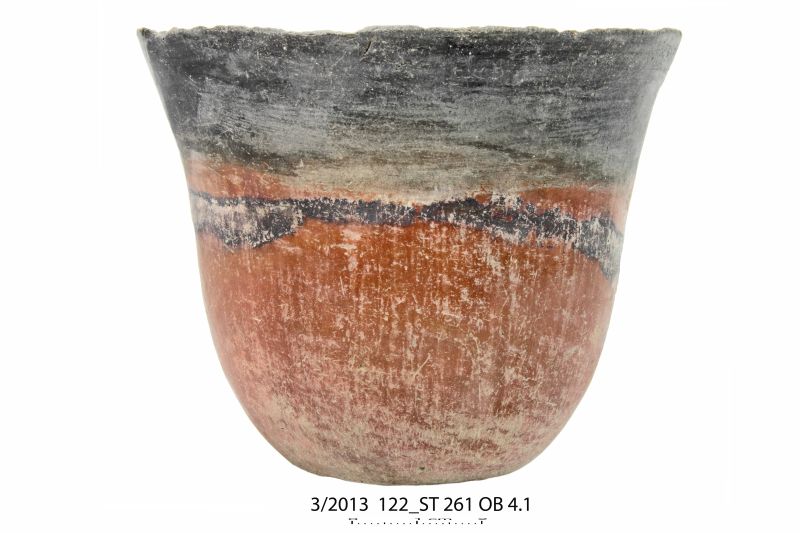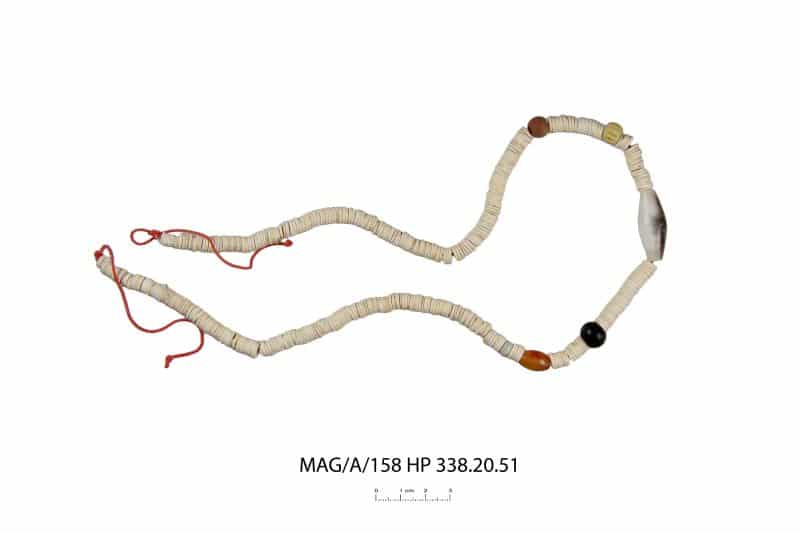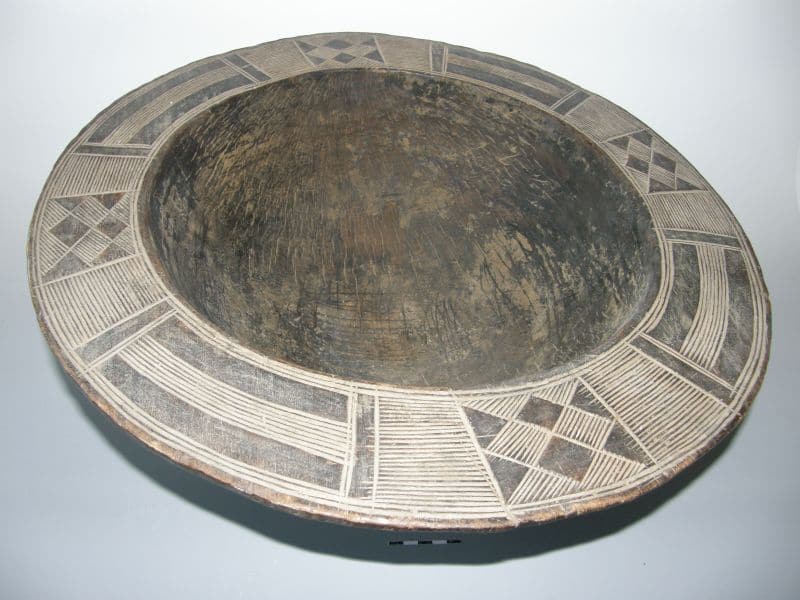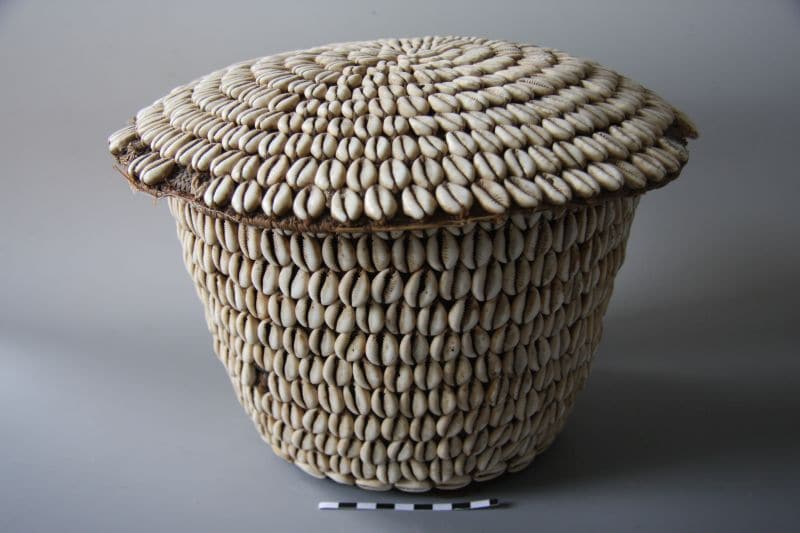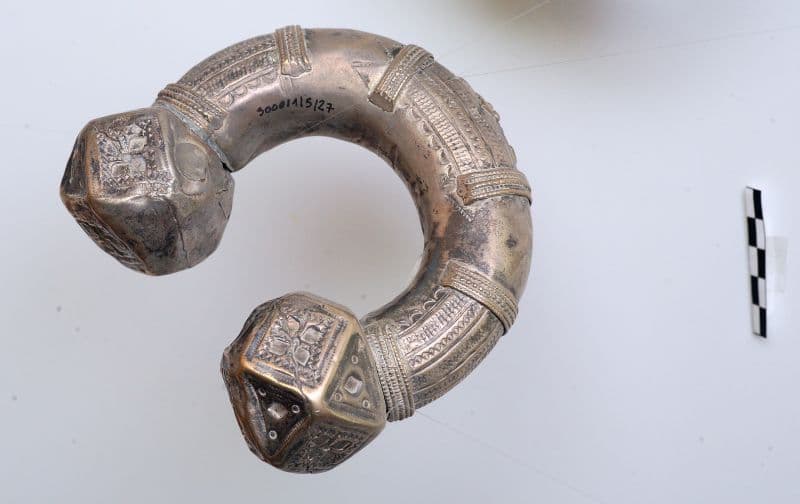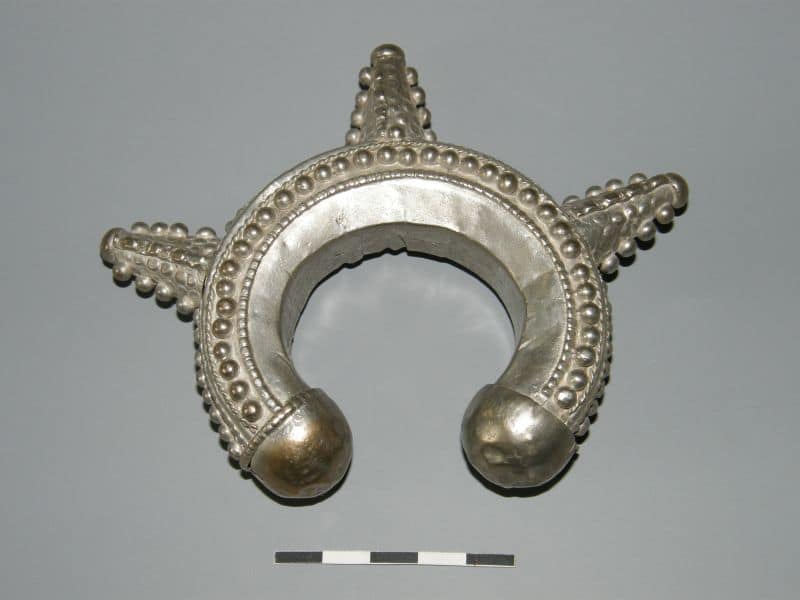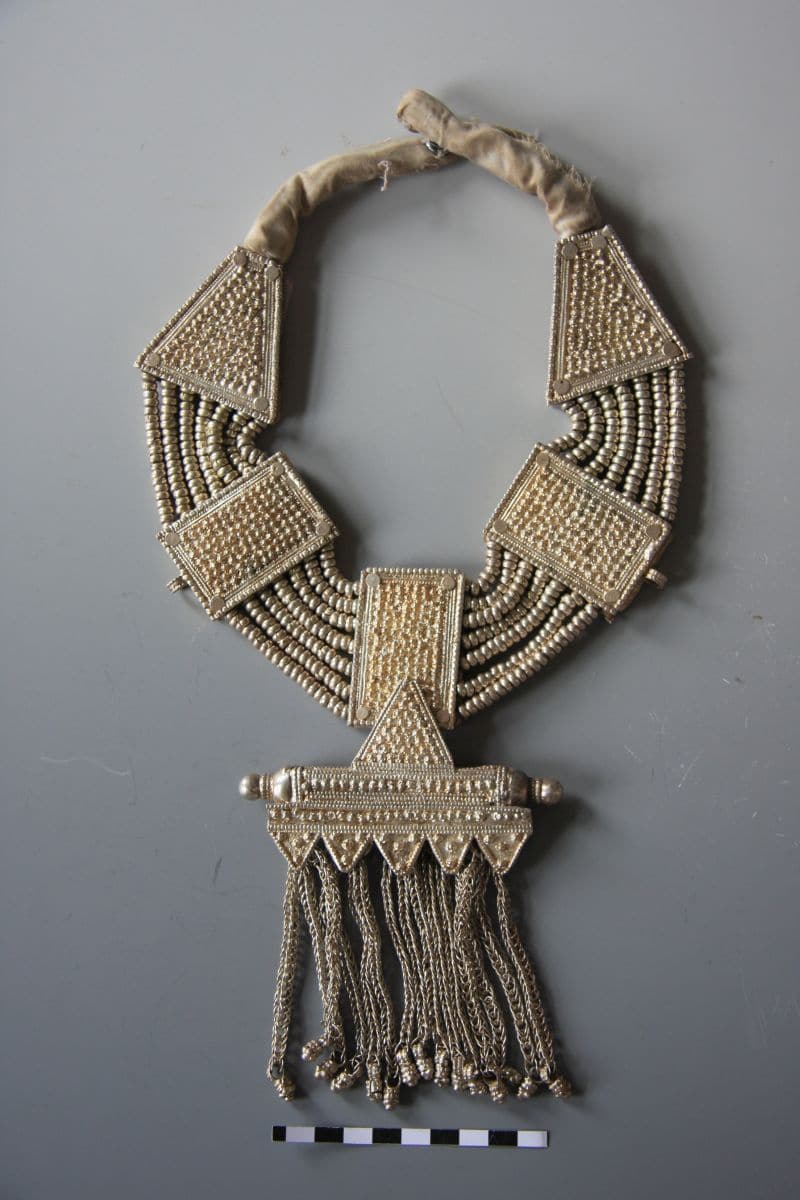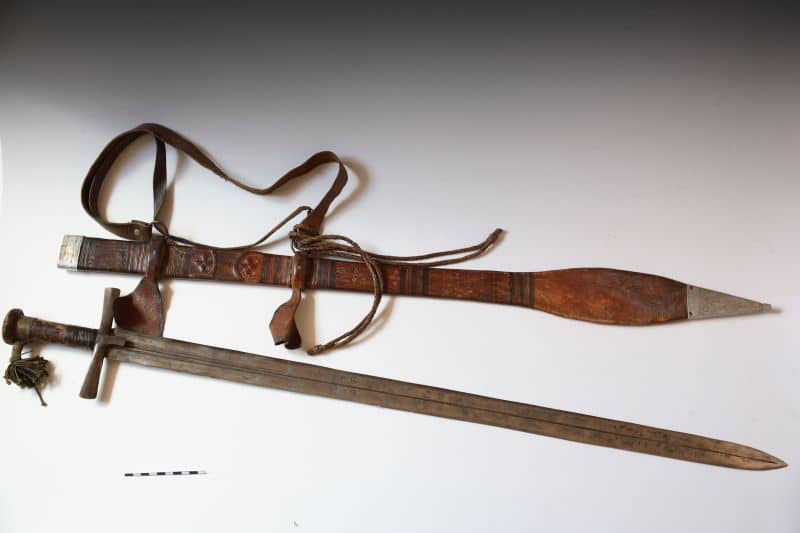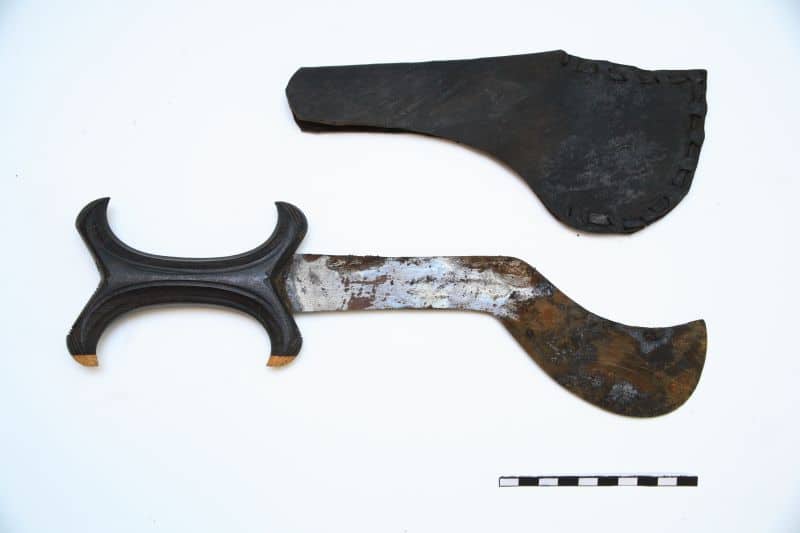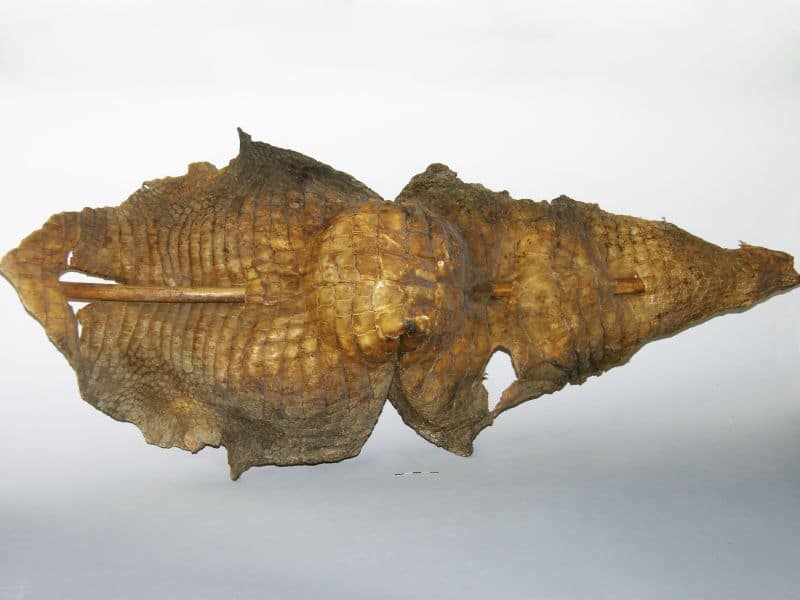Jak powstał ten dział?
Powstanie Działu Kultur Pozaeuropejskich było bezpośrednim skutkiem rozpoczęcia przez Muzeum Archeologiczne w Gdańsku (MAG) prac badawczych w Sudanie – państwie położonym w północno-wschodniej Afryce, nad Morzem Czerwonym. Obecność MAG na terenie tego kraju datuje się od 1993 roku.
Collaboration with foreign institutions
Działalność archeologiczna naszego muzeum w Sudanie prowadzona jest w ścisłej współpracy z National Corporation for Antiquities and Museums, czyli Sudańską Służbą Starożytności. Placówka ta wydaje koncesje na badania archeologiczne i nadzoruje pracę wszystkich misji na terenie całego Sudanu.
The department’s two-part collection
Kolekcja zabytków Działu Kultur Pozaeuropejskich składa się z dwóch części: archeologicznej i etnograficznej.
The first has been amassed thanks to Gdańsk Archaeological Museum’s excavations in Sudan, whilst the second is a result of purchases made during ethnographic journeys across Sudan, Egypt and Syria undertaken to learn about, analyse and record the culture of various peoples. Some ethnographic exhibits have also been gifted to the Museum, mostly by private individuals and occasionally by institutions.
Archaeology collection: how it was acquired
The fieldwork which allowed us to acquire our archaeology collection was part of a large-scale effort initiated by the NCAM to record archaeological sites in the Middle Nile valley. It was carried out in response to the planned construction of a dam near the village of Umm Duwemi and Merowe Island. Its aim was to salvage and protect cultural heritage in the areas affected by this major development project.
The size and make-up of the archaeology collection
There are 214 artefacts in the archaeology collection. Most of them were discovered in the Fourth Nile Cataract region during 1996–2010.
From a total of 439 finds recovered from excavations, the Sudanese authorities donated 212 of them to our Museum.
The collection primarily consists of pottery, including both handmade and wheel-thrown vessels in the form of cups, bowls and jars. We also have an impressive assemblage of jewellery, mostly represented by necklaces, bracelets and strings of variously shaped beads made of a range of materials (faience, ostrich eggshell, semi-precious stones, glass paste), as well as hair ornaments made of bone and metal earrings.
Other types of objects include tools and items of everyday use such as smoothing stones, mortars and pestles, iron knife blades and toilet accessories, among them an iron razor and tweezers.
The oldest objects in the collection were produced by the Kerma culture (2500–1500 BC), several exhibits date from the period when Nubia was ruled by Egypt’s New Kingdom (1500–1000 BC), as well as from the early Napatan (1000–656 BC) and Meroitic (350 BC–350 AD) periods. A considerable proportion of the collection dates from the post-Meroitic (4th–6th century) and Christian (7th–14th century) periods.
Ethnography collection
The ethnography collection, numbering 509 items, mostly comprises Sudanese objects. It includes articles of everyday use: ceramic, wooden and metal vessels and containers, woven baskets, tools, toilet accessories, items of clothing, jewellery and weapons.
It also features bequests and purchases from other countries in Africa, South America and Asia. Among them is a very interesting assemblage of ritual masks from the Gulf of Guinea (Benin, Gabon, Cameron, Congo), and ivory bracelets from Nigeria. The South American acquisitions, most of them gifts from captains of the Polish Merchant Navy, mainly comprise sets of hunting equipment, blowpipes, spears, and quivers with arrows from Ecuador, Columbia and Venezuela, as well as a group of anthropomorphic ceramic vessels and figurines from Ecuador and Peru.
All of the ethnographic artefacts date from the late 19th century to modern times.
Contact
Dział Kultur Pozaeuropejskich
Elżbieta Kołosowska
e.kolosowska@archeologia.pl
tel. +48 58 322 21 47
1. Puchar tulipanowy ręcznie lepiony, ceramika, Kerma Klasyczna (1750-1500 r. p.n.e.), rejon IV katarakty Nilu, Sudan
2. Misa ceramiczna ręcznie lepiona, ceramika, Kerma Środkowa (2050-1750 r. p.n.e.), rejon IV katarakty Nilu, Sudan
3. Wheel-thrown ceramic bowl, post-Meroitic period (4th–6th century AD), Fourth Nile Cataract region, Sudan.
4. Handmade ceramic jar, post-Meroitic period (4th–6th century AD), Fourth Nile Cataract region, Sudan.
5. Paseczek z różnokształtnych paciorków wykonanych ze skorup strusich jaj, kamieni półszlachetnych i pasty szklanej, okres wczesnonapatański (1000-656 r. p.n.e.), rejon IV katarakty Nilu, Sudan
6. Ozdoba do włosów z kości zwierzęcej powleczonej substancją organiczną Stara Kerma (2500-2050 r. p.n.e.), rejon IV katarakty Nilu, Sudan
7. Wooden bowl, its broad rim decorated with incised geometric designs, Beja peoples, contemporary product, northeast Sudan.
8. Basket and lid woven from plant fibres and decorated on the outside with sewn-on Cowrie shells, contemporary product, Sudan.
9. Wooden comb decorated with a geometric burnt design, Hadendoa tribe, contemporary object, northeast Sudan.
10. Silver ankle bracelet, Rashaida tribe, contemporary product, northeast Sudan.
11. Silver armlet, Rashaida tribe, contemporary product, northeast Sudan.
12. Silver necklace, contemporary Nubian product, Sudan.
13. Sword with scabbard, Beja peoples, northeast Sudan.
14. Knife with scabbard, Hadendoa tribe, contemporary product, northeast Sudan.
15. Throwing knife with scabbard, Funj peoples, contemporary product, south Sudan.
16. Shield made of crocodile skin, contemporary product, south Sudan.
17. Ritual mask, Punu peoples, contemporary product, Gabon.
18. Anthropomorphic ceramic figurine, contemporary product, Peru.
